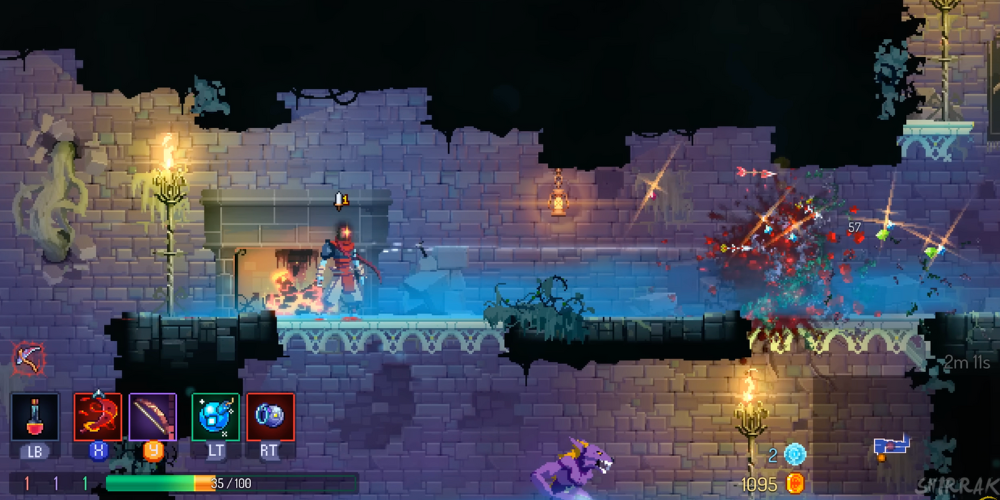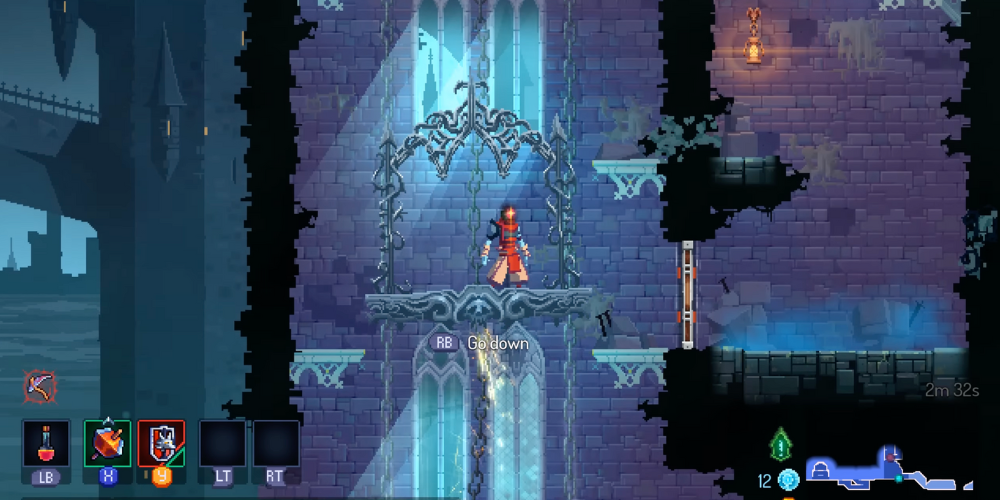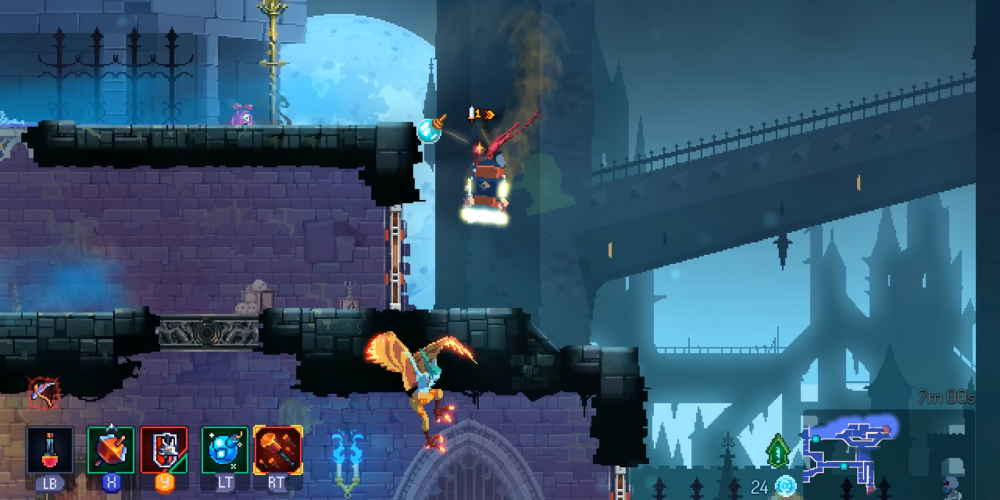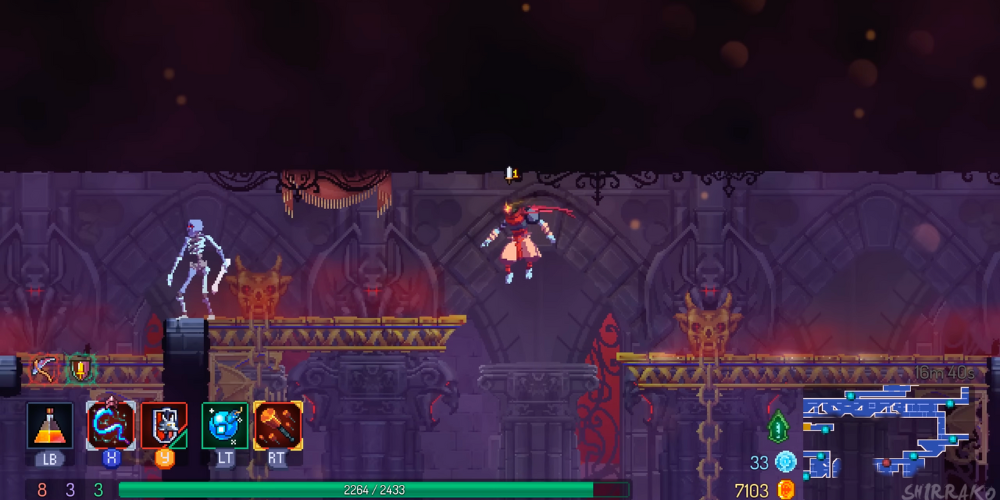Dead Cells: Return to Castlevania - Secrets and Easter Eggs Revealed

In the dynamic world of video games, the fusion of two beloved franchises often heralds unparalleled excitement and curiosity. Such is the case with "Dead Cells: Return to Castlevania," a captivating DLC that amalgamates the roguelike mechanisms of Dead Cells with the gothic aesthetics and lore-rich universe of the Castlevania series. This expansion not only introduces new challenges and environments but is also laden with secrets and Easter eggs, thoughtfully integrated to delight fans and deepen the gameplay experience. In this feature, we embark on a journey to uncover these hidden treasures, exploring how each element contributes to the game's storied tapestry and pays homage to its rich lineage.
1. Hidden Rooms and Passages
True to the spirit of exploration synonymous with Castlevania, "Return to Castlevania" intricately weaves a network of hidden rooms and secret passages throughout its levels. These concealed spaces are more than mere shortcuts or havens from the relentless onslaught of enemies. They often house rare upgrades, exclusive weapons, and artifacts that can significantly tilt the scales in the player's favor. Discovering these hidden rooms requires a keen eye and sometimes a leap of faith, as they are masterfully camouflaged within the environment or accessible only by activating covert mechanisms.
2. Classic Castlevania References
For fans of the Castlevania series, "Dead Cells: Return to Castlevania" is a treasure trove of nostalgia and reverence. The DLC is meticulously dotted with references to iconic characters, weapons, and lore from the Castlevania universe. From the Vampire Killer whip to the legendary Crissaegrim sword, the arsenal available to players is a callback to the series' heritage. Furthermore, characters such as Alucard and Richter Belmont make memorable appearances, not only serving as crucial elements of the narrative but also as playable characters with unique abilities, directly echoing their personas from classic Castlevania titles.
3. Musical Homages and Soundtrack Easter Eggs

The auditory experience of "Dead Cells: Return to Castlevania" is a masterclass in musical homage. The soundtrack, an eclectic mix of newly composed pieces and reimagined tracks from the Castlevania series plays a role in setting the atmosphere. Astute players will recognize melodies and motifs from iconic levels, and boss fights embedded within the game's score. These musical Easter eggs serve as subtle nods to pivotal moments in Castlevania history, enriching the experience for veterans of the series while introducing newcomers to its illustrious soundscape.
4. Secret Achievements and Challenges
Beyond the visible challenges that "Return to Castlevania" presents lies a layer of secret achievements and hidden challenges designed to test the mettle of even the most seasoned players. These often require unconventional approaches or the completion of tasks under specific conditions, rewarding success with exclusive titles, artwork, and sometimes, glimpses into the lore bridging Dead Cells and Castlevania. Uncovering these secrets demands dedication and ingenuity, pushing players to explore every cranny of the game and experiment with different strategies and playstyles.
5. Homage to Classic Boss Fights
The adrenaline-fueled boss fights in "Dead Cells: Return to Castlevania" are not only a test of skill and reflexes but also a homage to the epic confrontations that defined the Castlevania series. These encounters have been carefully designed to echo the mechanics, themes, and dramatism of their classic counterparts. For instance, players might find themselves facing a foe reminiscent of Dracula in a multi-phase battle that demands precision and tactical acumen or engaging in a duel that pays tribute to the memorable fight against Death in Castlevania. These boss fights stand as a testament to the enduring appeal of these confrontations and their significance within the franchise's lore.
6. Retro-Mode: A Blast from the Past

In an ambitious nod to the past, "Return to Castlevania" features an unlockable Retro-Mode, which transforms the game's visuals and audio to mimic the 8-bit aesthetics and chiptune sounds of the NES era. This mode is not only a visual and auditory callback to the early days of the Castlevania series but also alters gameplay mechanics to reflect the simpler, yet often more challenging, nature of retro video games. Activating Retro-Mode requires players to uncover a series of Easter eggs, each paying tribute to moments, characters, and elements from the origins of both Dead Cells and Castlevania.
7. Secret Dialogues and Lore Expansions
The narrative depth of "Dead Cells: Return to Castlevania" is further enriched by secret dialogues and lore expansions that players can uncover. These narrative snippets, often hidden behind obscure interactions or accessible only after fulfilling certain conditions, delve deeper into the backstories of key characters and the intertwining fates of the Dead Cells and Castlevania universes. They provide not only context but also add layers of complexity to the overarching story, rewarding players who invest the time to seek them out with a richer understanding of the game's world.
8. Tribute Items and Collectibles
Scattered throughout "Return to Castlevania" are tribute items and collectibles that serve as direct nods to elements from both Dead Cells and the Castlevania series. From the iconic wall chicken that restores health to rare items that reference lesser-known aspects of the franchises, these collectibles add an additional layer of discovery for fans. Not only do they offer practical benefits within the game, but they also encourage exploration and experimentation, as some items reveal their true value only under specific circumstances or when combined with other artifacts.
9. Alternate Endings and Paths

The narrative complexity of "Dead Cells: Return to Castlevania" extends to its structure, offering players the chance to explore alternate endings and paths based on their choices and discoveries throughout the game. These diverging narratives not only add to the replay value of the DLC but also instill a sense of agency in players, as their decisions actively shape the outcome of their adventure. Unraveling the secrets behind accessing these alternate paths involves engaging with the game's lore, deciphering clues, and, sometimes, defying conventional gameplay logic.
10. The Ultimate Easter Egg: A Crossover Codex
Perhaps the most ambitious Easter egg within "Dead Cells: Return to Castlevania" is the elusive Crossover Codex, a comprehensive in-game compendium that documents the intersections between the Dead Cells and Castlevania universes. This codex, hidden behind a series of intricate puzzles and challenges, offers dedicated players a deep dive into the lore, highlighting the parallels, contrasts, and crossover points between the two franchises. It stands as a testament to the collaborative spirit of the DLC, weaving together decades of video game history into a cohesive and engaging narrative.
Conclusion
"Dead Cells: Return to Castlevania" offers a masterclass on how to enrich a game with secrets and Easter eggs, creating layers of exploration, challenge, and narrative depth that reward players' curiosity and ingenuity. These hidden elements not only pay homage to the storied pasts of both franchises but also serve to deepen the gameplay experience, making each discovery a moment of triumph and nostalgia. As players venture through this hauntingly beautiful blend of Dead Cells and Castlevania, they are reminded of the enduring power of secrets and the joys of uncovering them.
Embark on your own journey through "Return to Castlevania," and let the secrets you unearth inspire your adventures through its shadowy corridors and against its formidable foes. Who knows what mysteries you might unveil?







